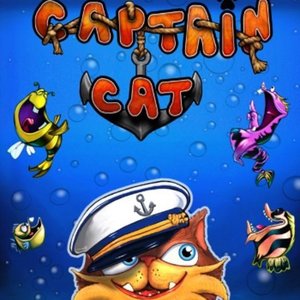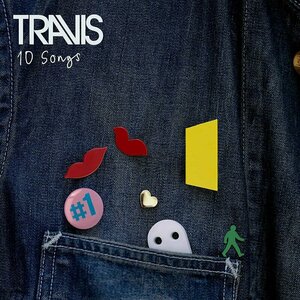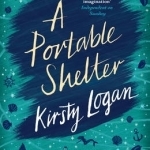Gareth von Kallenbach (980 KP) rated Captain Cat in Video Games
Jul 8, 2019
Joking aside, Captain Cat (“CC”), which originally launched on iOS and Android, has made its way to the Xbox One and Nintendo Switch. With a price tag of $6.99 on both platforms, the big question is, is a mobile to console port even worth that price tag?
CC is super easy to pick up and play with its simplified control scheme. Playing as the titular character, your end goal is to catch fish using your… anchor? The game starts pretty simple, but introduces new obstacles and adversaries to add to the challenge as you progress. With 4 game modes available, there seems to be plenty to do.
Waspfish, the main came mode, has you making your way through 25 levels of casting your anchor, dodging obstructions and catching fish. Watch for those enemies though, as getting hit could cause you to restart your level. Housekeeper is another mode, also having 25 levels, and it’s essentially the same as Waspfish. It has subtle differences including enemies, and your end goal being to catch a snail that can hide in its shell. Try to catch him while he’s hiding and you’ll have to restart the level. As with many games on mobile, you are scored on your performance on each level in both modes. Your aim is to try and nab a three-star rating by completing the level as fast as possible, in as little moves as possible, while collecting all the coins you can.
Our third mode, Infinite, is exactly what it sounds like. The Captain casts out into the sea where your goal is to get as deep as you possibly can while dodging obstacles and enemies. The final mode is called Perfect. This is by far the most difficult of the game modes. Getting only one cast of your anchor, you restart the level if you miss. It requires some trial and error, but the challenge was welcome and a great mode to get you to think strategy in where to cast.
These combination of modes should keep you occupied for a few ours, and are great for a quick pick up and play game when you only have a few minutes to sneak in some gaming. However, I question why you wouldn’t just pick up your phone and play it on there if it’s a game you really want to play. Although a quick look showed me that the game is no longer on the Play Store and can only be side-loaded via APK from other sources. I cannot speak to the availability on iOS.
Overall, Captain Cat is a fun puzzle game (which is surprisingly missing any sort of leaderboard) that provided some challenging moments and kept me engaged while I was playing. So now we get back to our question at hand. Is it worth the $6.99 price tag? If it’s on the Switch, I would say go for it. It’s the version I reviewed, but it also seems to make much more sense to be able to carry the game with you and play anywhere, versus the stationary nature of the Xbox One.
Jessica - Where the Book Ends (15 KP) rated A Warm Place to Call Home (a demon's story) in Books
Jan 30, 2019
I was thinking it would be another typical run of the mill demon story with paranormal twists and turns. However, Siemsen and his amazing ability to weave pure writing gold out of thin air is absolutely remarkable. My attention was grabbed from word one. I laughed with Frederick, I cried with Frederick, and in the end I cried for Frederick. I think no matter who reads this book at one point in time or another you can't help but to really connect with Frederick on some level. There were many points during the story that I could completely understand how he felt the way he did, and what brought him to that point. I will be recommending this book to everyone I know! I just can't seem to gush enough about it. I can't wait to read more work by Siemsen, he's now been added to my favorite author list.
Disclosure: I received this book for free in exchange for an honest review. All thoughts and words above are my honest opinion. ***This book is not intended for young adults! ***
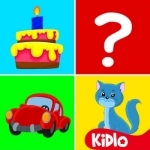
Memory Games For Kids
Education and Games
App
Description: Memory Games For Kids Do you want to enhance your kids' memory? Then Memory Games for...
Eilidh G Clark (177 KP) rated A Portable Shelter in Books
May 13, 2017
Kirsty Logan’s first collection of short stories, The Rental Heart and Other Fairytales, published by Salt in 2014, won the Polari First Book Prize in 2015. A Portable Shelter is her second collection. Set in a small cottage in the rural north coast of Scotland, Ruth and Liska are expecting their first child. The couple believe that their unborn baby will have a better chance of survival away from the harshness of suburban life. They make a pact with one another, that they will only ever tell their child the truth. Yet while Liska is asleep or Ruth is at work, each whispers secret stories to their unborn child. Delving into fantastical tales about people from their past and re-telling stories that span from generation to generation, the couple unfold the horrors of the real world. Whilst these tales, laced in myth and legend, and fattened with the magic of the imagination, demonstrate the art of oral storytelling, Logan reaches further to show the reader why storytelling is important.
While this book is primarily a collection of short stories, its novel like structure frames each story with a preceding monologue from either Ruth or Liska. The monologues offer delightful morsels of description that bring the harshness of Mother Nature into the safety of the couple’s bedroom, “right now our home is speaking to you. The walls creak their approval in the wind. The rain applauds on the roof. The lighthouse beam swoops, swoops, swoops. The tide breathes loud and slow like a giant. If you listen carefully, perhaps you can even hear the moon hum.” The pace of these sentences, combined with the delicacy of language demonstrates Logan’s skill at describing the sublime spirit of the natural world, which brings the narrative to life.
Most impressive though, is Logan’s poetic language and carefully crafted sentences which create the most beautiful imagery. In ‘Flinch,’ for example – James is a fisherman struggling with his identity, yet his affiliation with the land is locked into his first-person point of view where the reader gets to closely experience what he sees, “The sky is pinkish-grey like the insides of shells. Speckled bonxies wheel overhead. Seals loll on the rocks, fat as kings. The rising mist is cool and milky.” Any of these lines could easily be arranged into a poem and with sentences that are squeezed tight; they create a wonderful poetic rhythm. Logan uses this technique throughout her novel, demonstrating the precision and craft in her work. There are definite similarities in her writing style to fellow Scottish novelist and poet Jenni Fagan. Both authors use rich language, which is well crafted and smattered with vernacular. Furthermore, combining this with the reoccurring theme of identity, the oral storytelling tradition, landscape, folklore, and myth, it is clear to see why these authors contribute to the growing canon in Scottish literature.
This is a book that I will read over and over again because I know that in each reading, I will find something new. A Portable Shelter, I feel, deserves a place on my ‘keep’ book shelf.
A Portable Shelter, Kirsty Logan, London: Vintage, 2015

CashTrails+: Personal Finance
Finance and Business
App
"How much am I spending each month? Are my savings growing? How expensive was the last vacation?...
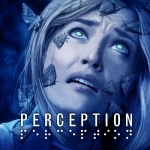
Perception
Video Game Watch
Perception is a tense psychological thriller where players must uncover the mysteries of a sinister...
action adventure
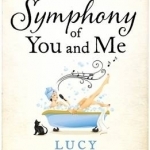
The Unfinished Symphony of You and Me
Book
The Unfinished Symphony of You and Me by Lucy Robinson, author of A Passionate Love Affair with a...

Documents To Go® - for BES12
Business and Productivity
App
IMPORTANT NOTE: The Documents To Go for BES12 application WILL NOT OPERATE unless your organization...
